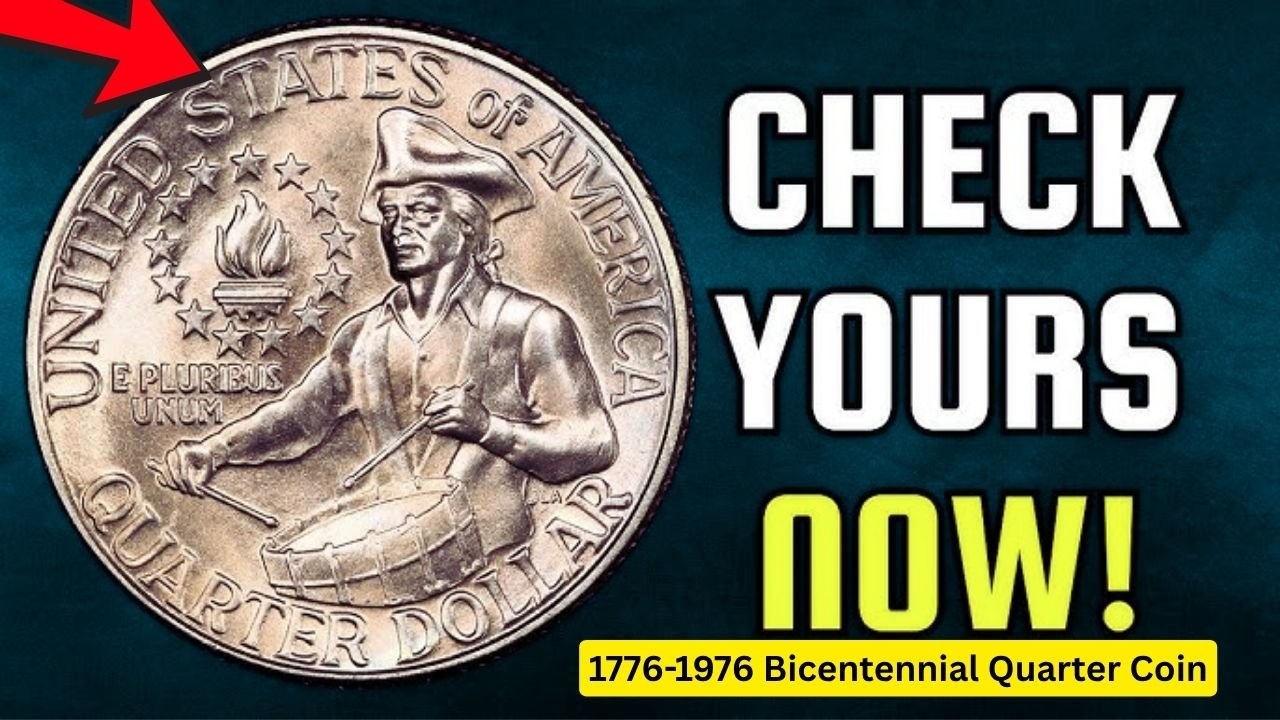A Surprising Find in Your Pocket Change
Many people still have old quarters from the 1970s sitting in jars or wallets. The 1776-1976 Bicentennial quarter is one of them. It was made to mark America’s 200th birthday. Most folks think it’s just worth 25 cents. But some of these coins can sell for thousands of dollars. Collectors are often shocked when they learn the real value. This coin has a special design with a drummer boy on the back and two dates on the front. It draws interest from history fans and coin hunters alike.
The Story Behind the Coin
Back in 1975 and 1976, the U.S. Mint made these quarters to celebrate the nation’s big anniversary. Over 1.6 billion were produced, so they are easy to find. The front shows George Washington, but with the years 1776 and 1976. The back has a colonial drummer, a torch, and 13 stars for the original states. They came in regular versions for everyday use and special ones for collectors. Some are made of copper and nickel, while others have real silver. This mix makes their worth vary a lot.
Different Types to Know
There are a few kinds of these quarters. The common ones are clad, meaning they have layers of copper and nickel. They were minted in Philadelphia, Denver, and San Francisco. Look for a D or S mark near Washington’s head for those cities. No mark means it’s from Philadelphia. Then there are the silver ones, which are 40 percent silver. These were sold in special sets. Proof versions have a shiny finish and sharp details. Errors happen too, like wrong strikes or extra marks, and those are what make prices skyrocket.
Everyday Values That Add Up
Most Bicentennial quarters you find in change are worth their face value if worn. But in good shape, they can fetch more. Circulated clad ones go for 30 to 85 cents. Uncirculated ones might bring 1 to 5 dollars. Silver versions start at about 1.50 dollars because of the metal inside. Prices change with silver costs, but right now they hover around 5 to 10 dollars for nice ones. Collectors pay extra for high grades from services like NGC or PCGS.
| Type | Circulated Value | Uncirculated Value |
|---|---|---|
| Clad (No Mint Mark) | $0.25 – $0.85 | $1 – $5 |
| Clad (D Mint) | $0.30 – $0.85 | $1 – $5 |
| Silver (S Mint) | $1.50 – $5 | $5 – $10 |
Shocking High-End Sales
What really surprises people are the rare pieces. A top-grade silver proof in MS66 sold for 8,400 dollars at auction in 2023. Another one with a special error hit nearly 20,000 dollars. Errors like double dies, where the image looks blurry, or off-center strikes can boost values to hundreds or thousands. For example, a clad quarter with a major error might sell for 500 dollars or more. These finds turn ordinary coins into treasures. Videos and online forums buzz with stories of people cashing in big.
| Rare Variant | Estimated Value | Key Feature |
|---|---|---|
| Double Die Obverse | $100 – $500 | Blurry details on front |
| Off-Center Strike | $200 – $1,000 | Image shifted off center |
| High-Grade Proof (MS66+) | $3,000 – $8,400 | Perfect condition, certified |
Tips for Collectors Starting Out
If you have one, check the condition first. Look for scratches or wear. Use a magnifier to spot errors. Get it graded if it seems special. Sites like eBay or coin shops are good places to sell. Join groups online to learn more. Remember, most are not rare, but a few can change your day. Always buy from trusted sellers to avoid fakes.
Why It Still Matters Today
This coin reminds us of America’s past. Its value shocks because it mixes history with money. As time goes on, good ones might rise in price. Collectors keep hunting them in old rolls or estate sales. Whether you have one or not, it’s fun to think a simple quarter could be worth a lot. Next time you see pocket change, take a closer look. You might find a hidden gem from 1976.
